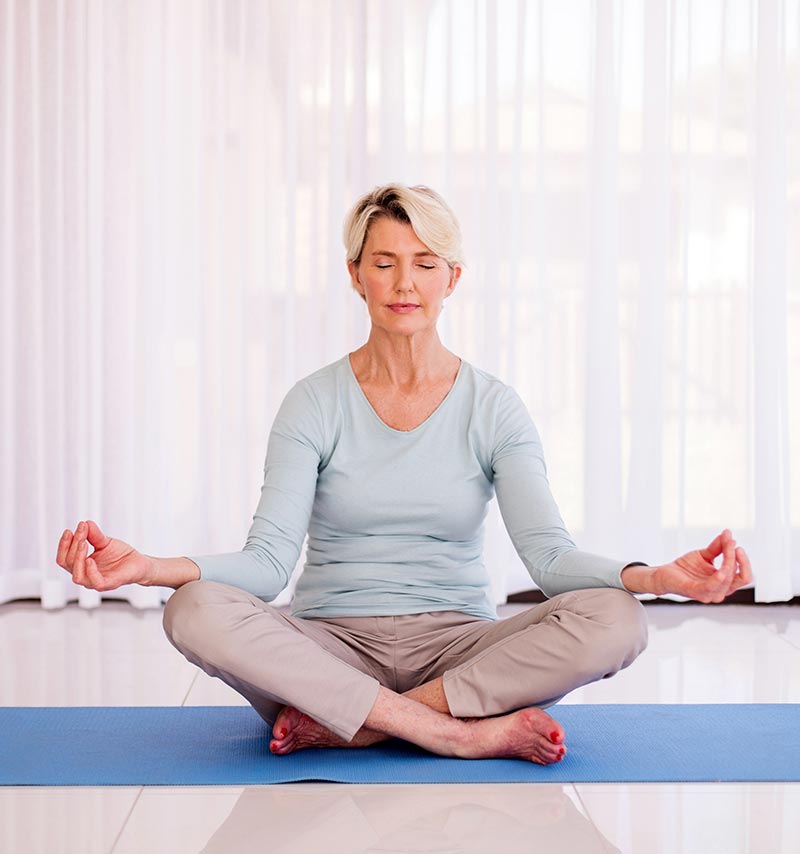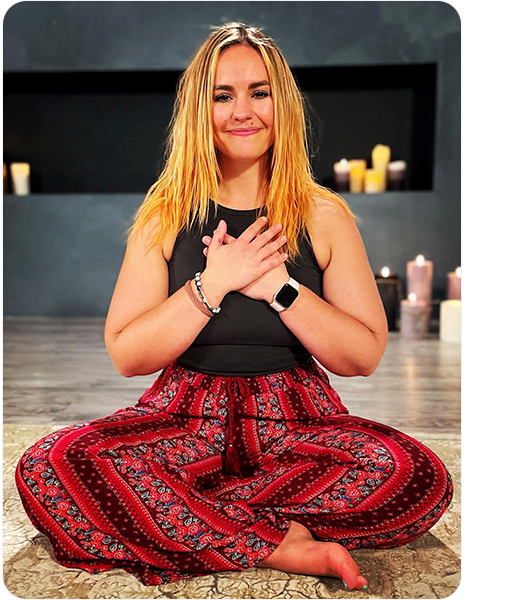Self-Care Strategies And Yoga Education

Self-Care Awareness Month in September is a time to pay attention to how you feel in each moment, communicate clearly, speak up for yourself, and say yes or no … guilt-free. These daily practices are integral to Wellbeats Instructor Maya Baglien’s yoga therapy sessions for groups and individuals.

Maya teaches Wellbeats classes including Sonic Meditation, Therapeutic Yoga: Back, Therapeutic Yoga: Neck, and Therapeutic Yoga: Wrist.
“Self-care involves three components: body, mind, and spirit,” says Maya. “It’s a balance of all three, but you need to prioritize what comes first. It’s really hard to focus on meditation when your body hurts. For example, if you have chronic pain or sore muscles, you may want to take steps to relieve that pain first so that you can benefit from meditation.” She also advises involving different modalities. “If you’re getting a massage, for example, have nice gentle music on in the background.”
Maya earned her 500-RYT (Registered Yogo Teacher) and is continuing her education for the 1,000-hour IAYT yoga therapy certification. She brings this expertise to her Wellbeats classes. “I like to slow things down and guide people to feel, breathe, and connect their minds to their bodies,” she explains. “I focus on modifications and making sure that classes are adaptable for a variety of needs, and I focus on accessibility so as many people as possible can participate. That can mean using props like a yoga block or blanket and offering variations of postures.”
In yoga therapy sessions, Maya personalizes the instruction to the individual. “I always say, I am your secondary guide. You are your primary guide. Sometimes people don’t want to sweat; they just want to feel safe or find peace or ease chronic pain. Maybe they just want to feel strong. I try to empower people to listen to their own body.”
Ancient yoga principles
Maya incorporates a host of ethical and practical yoga principles into her yoga therapy training. Some examples:
- Ahimsa = nonviolence; absence of injury; a form of caring for yourself
- Asana = bodily yoga postures
- Hatha = balancing the body and mind. It typically involves a set of physical postures (yoga poses) and breathing techniques practiced more slowly and with more static posture holds
- Mudra = hand gestures
- Niyama = observances about yourself
- Pranayama = breathing techniques; breathing exercises and patterns
- Santosha = contentment; satisfaction (examples: practicing gratitude through meditation; making lists of things you are grateful for)
- Svadhyaya = self-inquiry; listening to yourself
- Vinyasa = stringing postures together so that you move smoothly from one to another using breath.
If you’re interested in a deeper dive into yoga principles and practices, Maya recommends this Yoga International article with yoga education books.
Daily self-care
Maya’s top personal daily self-care habits may give you some ideas for yourself:
- “Release expectations; it’s how I get out of my own way so that yoga can be a practice of self-care.”
- “I see a therapist every week. Having the vulnerability to ask for guidance is, I think, a sign of strength.”
- “Seek help, whether from a mental health therapist, a family member, or loved ones.”
- “I take walks with my dog. I get to spend time with a creature I love, see gorgeous gardens, look at houses, and breathe fresh air. It is such a reset button, having a connection to nature.”
She summed up three easy ways to get started or add to your daily self-care routine:
- Make time for yourself to process through emotions
- Involve different modalities – e.g., if you’re getting a massage, have nice gentle music in the background
- Walk every day